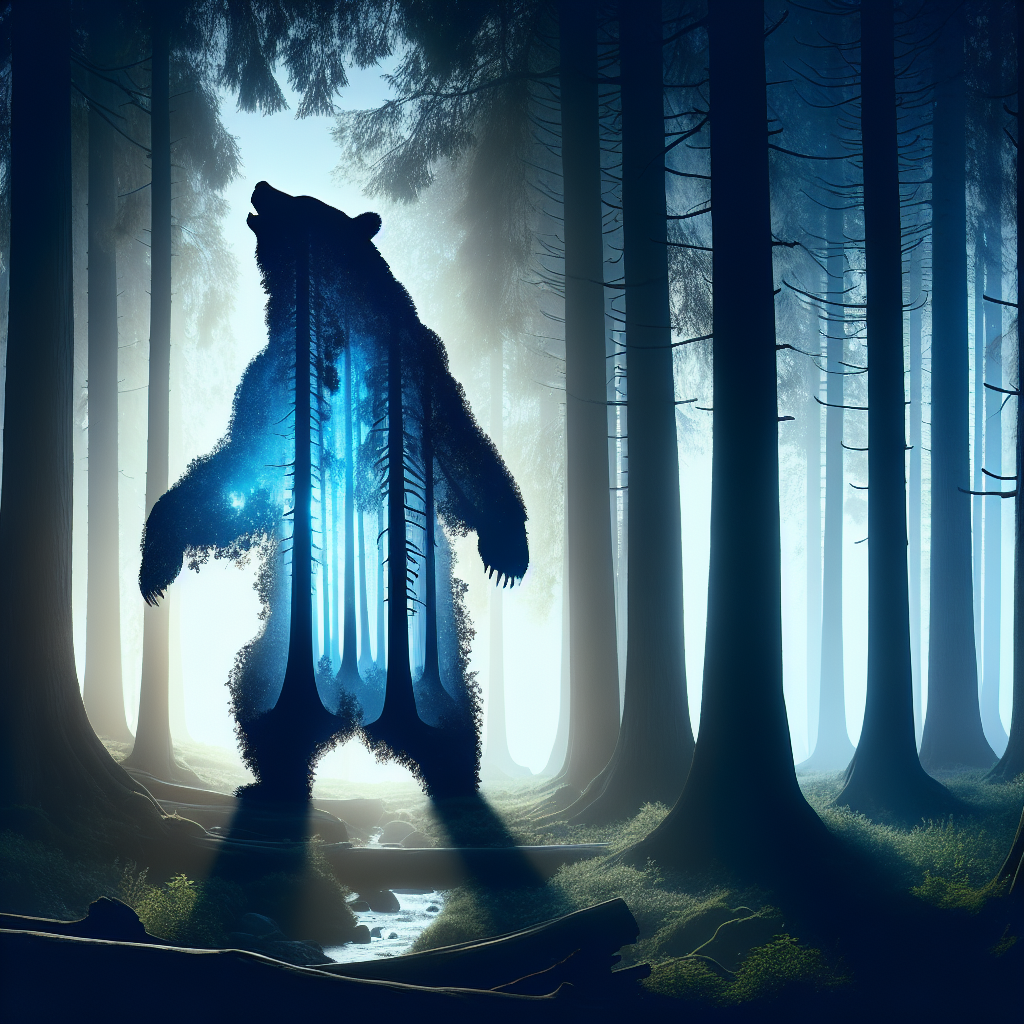The Ultimate Guide to Werebears: From Ancient Legends to Modern Romance
In the realm of fantasy literature, few creatures capture our imagination quite like the werebear. These magnificent shapeshifters embody a perfect balance of raw power and tender vulnerability, making them irresistible protagonists in paranormal romance and fantasy fiction. Unlike their more famous werewolf cousins, werebears bring a unique combination of protective instincts, unwavering loyalty, and primal strength that has enchanted readers across cultures and centuries.
Understanding the Werebear: More Than Just a Shapeshifter
A werebear is fundamentally a being capable of transforming between human and bear forms, but this simple definition barely scratches the surface of their complexity. These characters represent the eternal struggle between civilization and wilderness, control and instinct, gentleness and ferocity.
In contemporary fantasy romance, werebears have evolved into deeply nuanced characters who challenge traditional notions of masculinity and strength. They're not just physically powerful—they're emotionally complex beings who must navigate the delicate balance between their human consciousness and their bear nature.
Physical Characteristics: Built for Power and Protection
Human Form Attributes
Imposing Stature: Werebears in human form are typically portrayed as tall, broad-shouldered individuals whose very presence commands attention. Their muscular build reflects the immense strength that lies dormant within them, ready to emerge when needed.
Rugged Appeal: These characters often sport distinctly wild features—thick, unruly hair, weathered skin that speaks of time spent outdoors, and facial hair that adds to their untamed appearance. This ruggedness isn't merely aesthetic; it serves as a visual reminder of their connection to the natural world.
Commanding Presence: Beyond their physical attributes, werebears possess an indefinable quality that draws others to them. This magnetic presence stems from their dual nature—the confidence of a apex predator combined with the depth of human emotion.
Bear Form Magnificence
When transformed, werebears become creatures of awe-inspiring power. They're typically depicted as larger than ordinary bears, with dense fur that provides both protection and warmth, massive claws capable of incredible destruction or surprising gentleness, and eyes that retain their human intelligence even in animal form.
The Psychology of the Werebear: Gentle Giants with Complex Hearts
Core Personality Traits
Protective Instincts: Perhaps no trait is more defining than a werebear's compulsion to protect. This isn't limited to physical protection—they guard the emotional well-being of their loved ones with equal fervor. Their protective nature extends beyond romantic relationships to encompass friends, family, and even strangers in need.
Unwavering Loyalty: Once a werebear commits, that commitment is absolute. This loyalty runs deeper than simple faithfulness; it's a fundamental aspect of their identity that shapes every decision they make.
Emotional Complexity: Despite their stoic exteriors, werebears experience emotions with startling intensity. They may struggle to express these feelings verbally, but their actions speak volumes about the depth of their care and concern.
Solitary Nature: Many werebears prefer solitude, finding peace in quiet, natural settings away from the chaos of human society. However, love has the power to draw them from their self-imposed isolation, creating compelling character arcs centered on personal growth and connection.
Patience and Persistence: Werebears understand that the most meaningful things in life require time to develop. Whether pursuing a romantic interest or solving complex problems, they approach challenges with methodical patience that often leads to lasting success.
The Transformation: A Process of Power and Vulnerability
Triggers and Catalysts
The shift from human to bear form rarely happens at random. Strong emotional states—particularly anger, fear, or the instinct to protect—serve as primary catalysts. Unlike werewolves, who are often slaves to lunar cycles, werebears typically maintain more control over their transformations, though intense situations can override their self-control.
The Physical Process
Transformation is portrayed as an intense, often overwhelming experience. The body undergoes dramatic changes as bones elongate and strengthen, muscles expand exponentially, and human features give way to ursine characteristics. Enhanced senses flood the transforming individual with new information—scents become more complex, sounds more distinct, and the world takes on new dimensions of perception.
Emotional and Psychological Impact
The mental aspect of transformation is equally significant. As the bear nature emerges, primal instincts surge to the forefront, creating internal conflict between human reasoning and animal impulse. This struggle often mirrors broader themes in the character's personal journey, particularly their relationships with others.
Return to Human Form
The shift back to human form typically occurs when the triggering situation resolves or through conscious effort. This return often leaves the individual emotionally and physically drained but frequently provides clarity about their feelings and priorities.
Werebears in Contemporary Literature
Notable Examples
Modern paranormal romance has embraced werebears as compelling protagonists who offer fresh perspectives on love, loyalty, and personal transformation. Works like Kelly Lord's "My Sexy Stepbrother is a Werebear" explore complex family dynamics complicated by supernatural elements, while E. Adamson's "We Are Bear" delves into themes of identity and belonging within shapeshifter communities.
These stories typically center on the werebear's journey toward emotional vulnerability and the relationships that help them balance their dual nature.
Ancient Roots: Mythology Across Cultures
Norse Berserkers: Warriors of Legend
The most famous historical connection to werebear mythology comes from Norse culture, where berserkers were legendary warriors believed to channel ursine power in battle. These fighters wore bear pelts and were said to enter trance-like states of fury that made them nearly invincible.
The Saga of the Ynglings provides detailed accounts of these warriors, describing their transformation into creatures of pure battle-fury. Bödvar Bjarki, one of the most renowned berserkers, was said to literally transform into a bear during combat, becoming an unstoppable force on the battlefield.
Slavic Traditions: Nature's Guardians
Slavic folklore presents a different perspective on bear transformation, often connecting it to divine power and natural guardianship. The god Veles embodied this connection, shapeshifting between human and bear forms to protect the wilderness and its creatures.
These tales emphasize the werebear as a bridge between human civilization and the untamed natural world, serving as both protector and teacher.
Native American Wisdom: Spiritual Transformation
Indigenous American traditions view bear transformation through a spiritual lens, often associating it with healing, wisdom, and deep connection to the earth. Tlingit legends speak of the Kooshdakhaa, shapeshifters who could take bear form and served as bridges between the human and animal worlds.
These stories emphasize transformation as a gift rather than a curse, highlighting the bear's role as a powerful spiritual guide and protector.
The Enduring Appeal of Werebear Characters
The continued popularity of werebears in modern fiction stems from their unique position in the supernatural hierarchy. They represent strength without brutality, protection without possessiveness, and passion tempered by patience. In a world that often feels chaotic and uncertain, the werebear's steady presence and unwavering loyalty offer comfort and security.
Their stories resonate because they explore universal themes—the balance between strength and gentleness, the challenge of opening one's heart to love, and the courage required to protect what matters most. Whether rooted in ancient mythology or contemporary romance, werebears continue to evolve while maintaining their essential appeal as powerful protectors with tender hearts.
Through their transformations, both physical and emotional, werebears remind us that true strength often lies not in the ability to fight, but in the wisdom to know when to be gentle—and the courage to be vulnerable with those we love.
💝 Ready to Explore More Romance?
If you enjoyed this article about Werewolf writing, discover thousands of captivating love stories on our platform.
Download App







